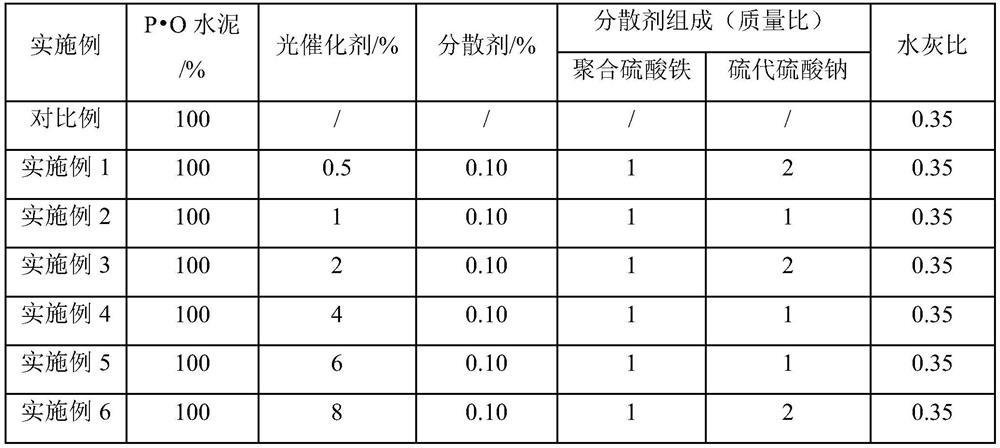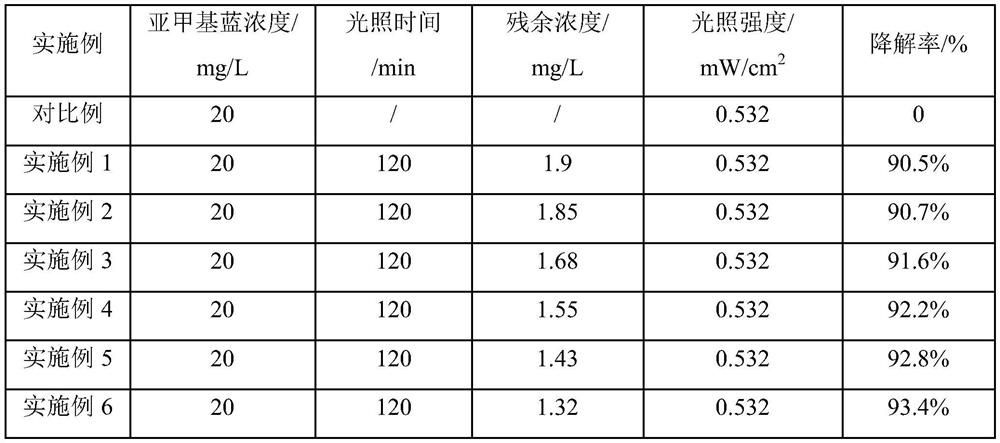Photocatalytic cement-based material
A cement-based material and photocatalytic technology, applied in the field of building materials, can solve problems such as poor photocatalytic effect, achieve the effects of not causing secondary pollution, achieving uniform distribution, and low preparation cost
- Summary
- Abstract
- Description
- Claims
- Application Information
AI Technical Summary
Problems solved by technology
Method used
Image
Examples
Embodiment Construction
[0021] It should be noted that, in the case of no conflict, the embodiments of the present invention and the features in the embodiments can be combined with each other.
[0022] The present invention will be described in detail below in conjunction with examples.
[0023] The raw material ratios of the photocatalytic cement-based materials of Examples 1 to 6 of the present invention are shown in Table 1, and the raw materials are mixed and stirred evenly according to the raw material ratios shown in Table 1 to obtain the photocatalytic cements of Examples 1 to 6 of the present invention base material. Among them, the water-cement ratio in Table 1 is the ratio of the amount of water in the photocatalytic cement-based material to the amount of cement. For example, when the amount of cement is 100g, the water-cement ratio is 0.35, and the amount of water is 35g.
[0024] The photocatalyst in the photocatalytic cement-based material of Examples 1 to 6 of the present invention is...
PUM
| Property | Measurement | Unit |
|---|---|---|
| quality score | aaaaa | aaaaa |
Abstract
Description
Claims
Application Information
 Login to View More
Login to View More - R&D
- Intellectual Property
- Life Sciences
- Materials
- Tech Scout
- Unparalleled Data Quality
- Higher Quality Content
- 60% Fewer Hallucinations
Browse by: Latest US Patents, China's latest patents, Technical Efficacy Thesaurus, Application Domain, Technology Topic, Popular Technical Reports.
© 2025 PatSnap. All rights reserved.Legal|Privacy policy|Modern Slavery Act Transparency Statement|Sitemap|About US| Contact US: help@patsnap.com


